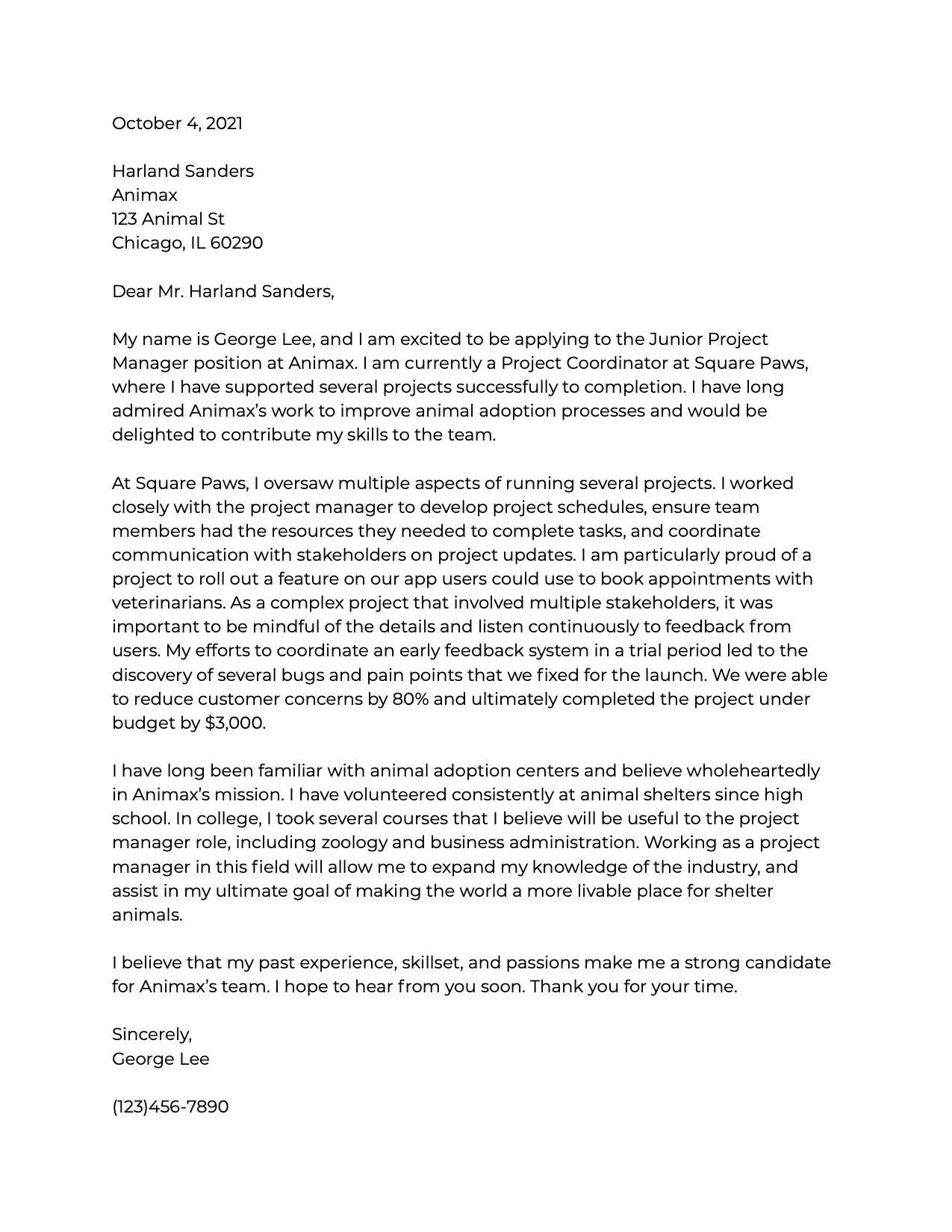Understanding the Importance of a Project Management Cover Letter
In the competitive landscape of project management, securing your dream job requires more than just a stellar resume. A well-crafted cover letter serves as your initial introduction to potential employers, offering a unique opportunity to showcase your personality, passion, and suitability for the role. It’s your chance to make a compelling first impression and demonstrate why you’re the ideal candidate. Neglecting this critical step could mean missing out on opportunities. The project management field is highly competitive, and a cover letter lets you stand out from the crowd. A cover letter offers a chance to elaborate on your experience and expertise in ways that a resume simply cannot. The cover letter also allows you to directly address the specific requirements outlined in the job description, highlighting your most relevant skills and experiences. By taking the time to personalize your cover letter for each position, you demonstrate your genuine interest in the company and the role.
Why a Cover Letter Matters for PM Positions
A cover letter for a project management position is essential for several reasons. Firstly, it allows you to provide context to your resume. Project management roles often require a diverse skillset, and a cover letter enables you to explain how your experiences align with the specific demands of the job. Secondly, it showcases your communication skills. As a project manager, effective communication is paramount, and your cover letter is a direct demonstration of your writing abilities, which are essential to convey project updates, manage stakeholders, and clearly articulate project goals. Furthermore, a cover letter offers a valuable opportunity to express your enthusiasm for the position and the company, setting you apart from applicants who only submit a resume. Finally, it offers space to tailor your application to the specific job requirements, demonstrating your understanding of the company’s needs and your ability to address them.
Key Components of a Winning PM Cover Letter
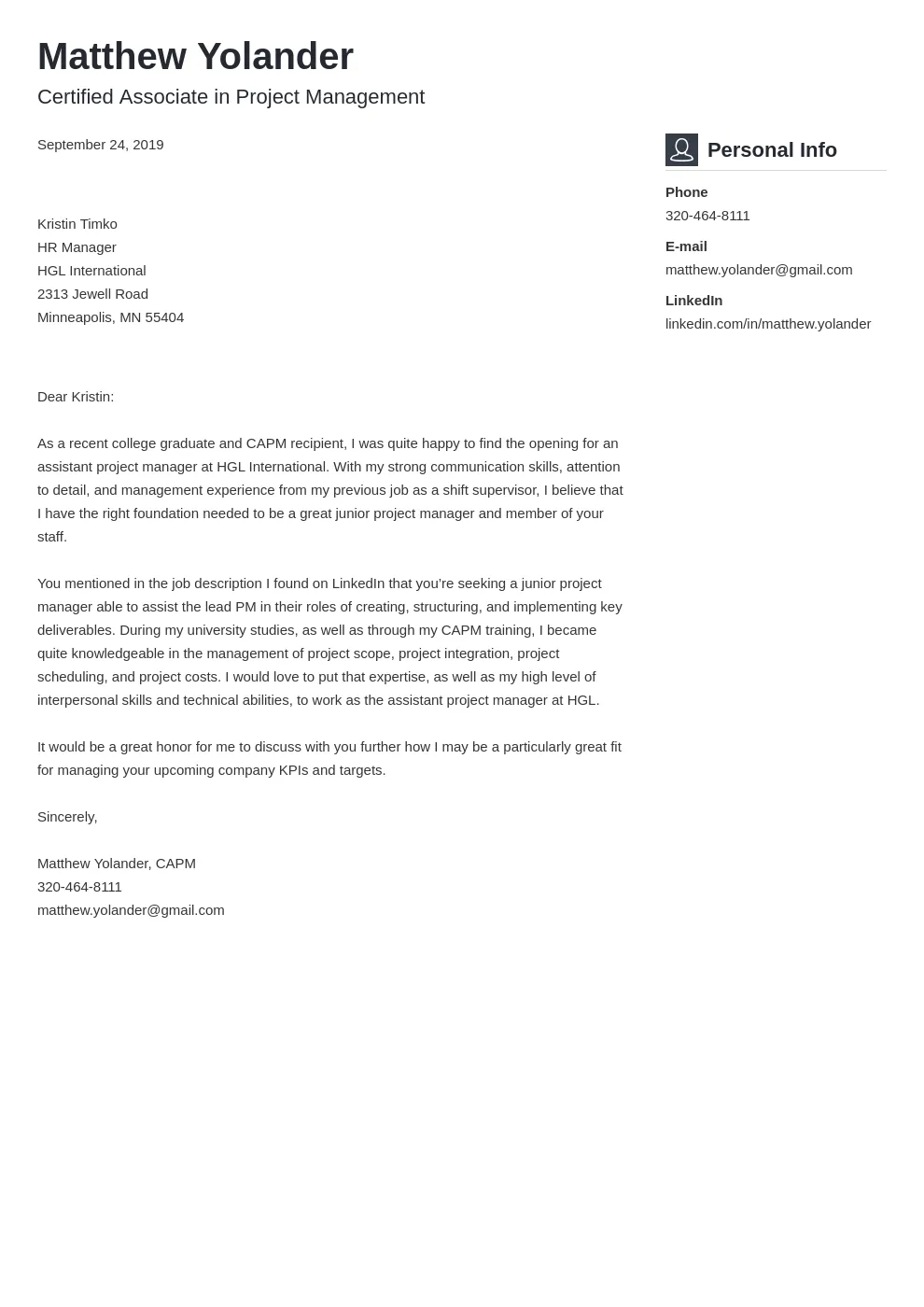
A strong cover letter goes beyond simply reiterating your resume; it highlights your key qualifications and demonstrates your suitability for the specific role. The best cover letters will always showcase the best parts of your experience and skill set. Begin by addressing the hiring manager by name, if possible, to show your attention to detail and initiative. In your introduction, clearly state the position you’re applying for and express your interest in the company. The main body should then highlight your relevant skills and experiences, providing specific examples to support your claims. Moreover, emphasize your achievements, quantifying them whenever possible to demonstrate your impact. Finally, conclude your letter by reiterating your enthusiasm and expressing your availability for an interview. Be sure to proofread your letter thoroughly before submitting it.
Highlighting Relevant Project Management Skills
Project management is a multifaceted field, so you want to highlight the skills that are most relevant to the job. First, you should showcase your leadership abilities. These are essential for guiding and motivating teams. Mention your ability to manage teams, resolve conflicts, and foster a positive work environment. Additionally, emphasize your organizational skills, like planning, scheduling, and resource allocation, to ensure projects stay on track and within budget. Also, demonstrate your communication skills, including your ability to articulate complex ideas clearly. Mention your experience in risk management and problem-solving. Highlight your ability to identify potential issues and implement effective solutions. Finally, demonstrate your understanding of project management methodologies. Mention any experience with Agile, Scrum, or Waterfall to show your adaptability to various project approaches.
Showcasing Experience and Achievements
To stand out, focus on how your past experiences align with the job’s requirements. When describing your achievements, use the STAR method (Situation, Task, Action, Result) to provide a clear and concise overview of your accomplishments. Start by outlining the situation, then describe the task you were assigned, the actions you took, and the resulting outcome. Always quantify your achievements whenever possible. For instance, instead of saying, “Improved project efficiency,” state, “Improved project efficiency by 15% through implementing a new scheduling system.” Make sure to demonstrate a positive impact. Moreover, tailor your examples to match the specific responsibilities outlined in the job description. If the job requires experience with a particular project management methodology, showcase your achievements using that methodology. This helps the recruiter see your direct qualifications for the role.
Demonstrating Understanding of the Role
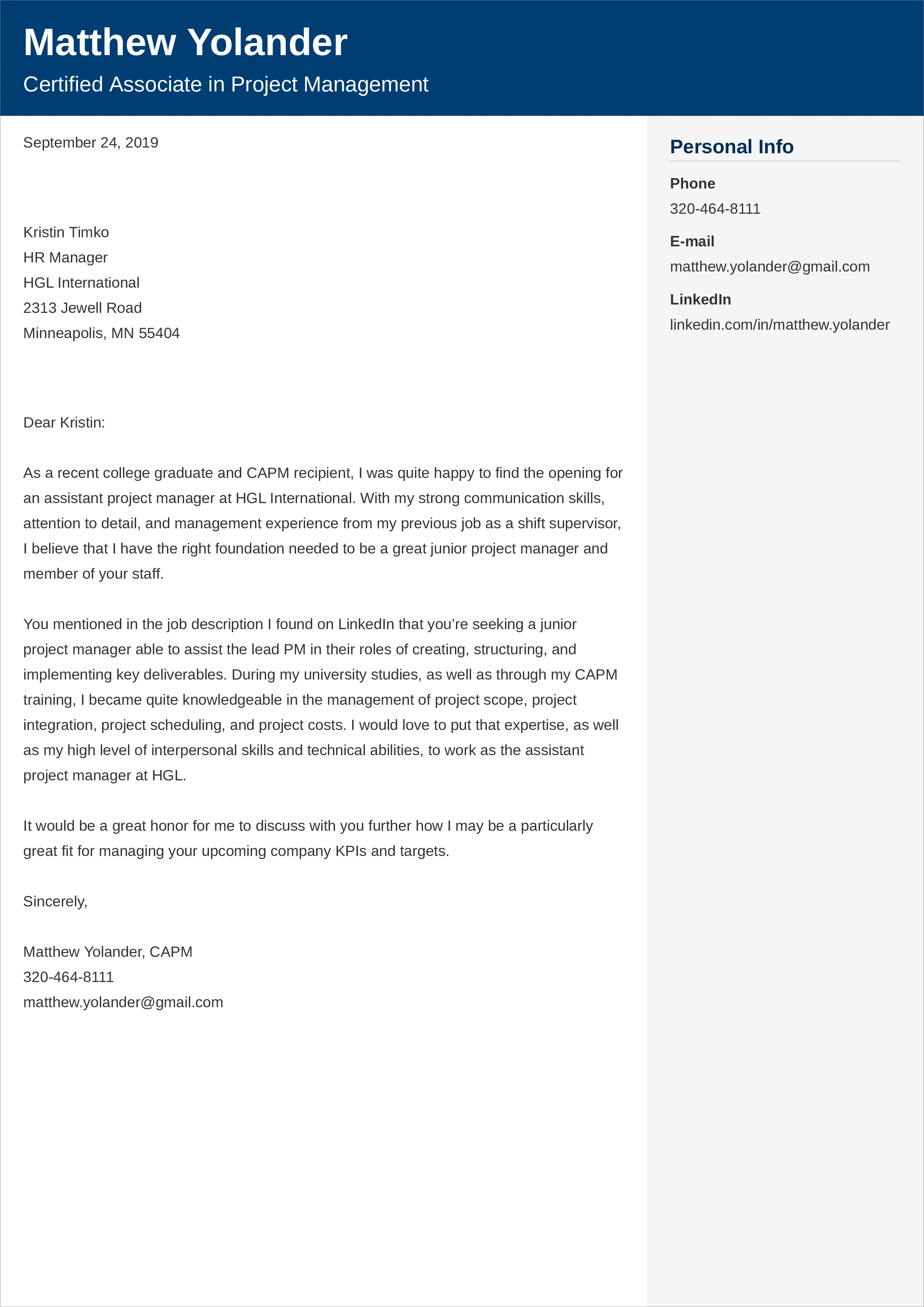
Demonstrate your understanding of the project management role by showcasing your knowledge of the industry, the company, and the specific challenges the role entails. Research the company and its projects to understand its goals and values. Mention how your skills and experience align with their objectives. In your cover letter, address specific challenges the company might be facing, and suggest how you can contribute to overcoming them. If the job description mentions specific tools or methodologies, demonstrate your familiarity with them. Also, express your passion for project management and your desire to contribute to the company’s success. By demonstrating your understanding of the role, you show the hiring manager that you are not only qualified but also genuinely interested in the position and that you are prepared to take on the challenges the role presents.
5 Secrets to an Outstanding PM Cover Letter
While many candidates simply create generic cover letters, the truly outstanding ones utilize specific strategies to grab the hiring manager’s attention. Here are 5 secrets to crafting a PM cover letter that gets you noticed and hired.
Tailoring Your Cover Letter to the Job Description
Generic cover letters are easily dismissed. The best cover letters are tailored to the specific job description. Carefully review each job description and identify the key skills and experiences the company is looking for. Customize your cover letter to highlight the skills and experiences that match those requirements. Use the same keywords and phrases that are used in the job description to demonstrate your understanding of the role and the company’s needs. By tailoring your cover letter, you make it clear that you’ve carefully read the job posting and are genuinely interested in the position, and not just sending out a generic application.
Quantifying Achievements with Numbers and Data
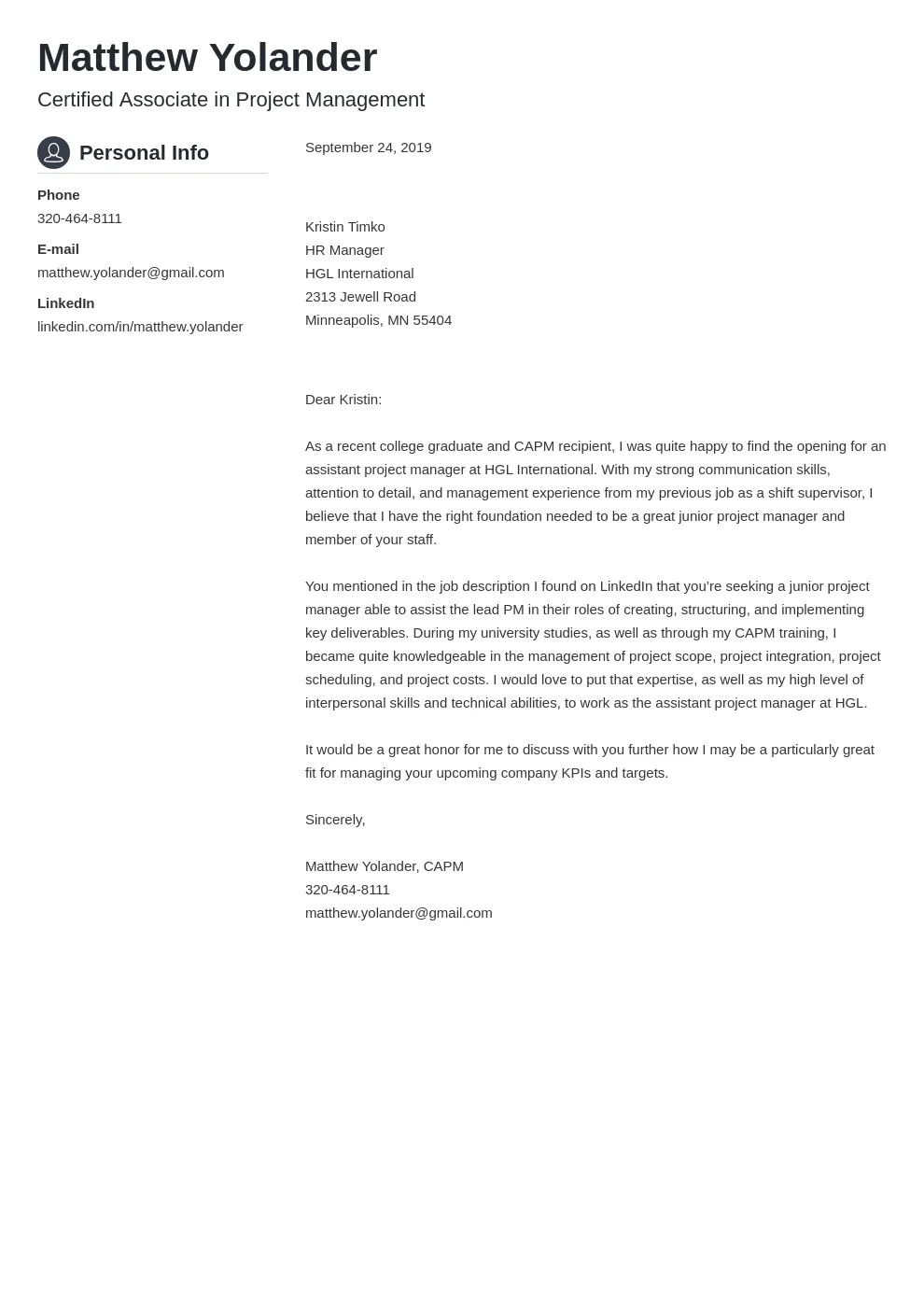
Instead of vague statements, use numbers and data to demonstrate your achievements and the impact you’ve made in previous roles. For example, state how much you reduced project costs, improved project completion times, or increased team efficiency. Quantifiable achievements are easily recognized. Instead of saying “Managed projects successfully,” state, “Successfully managed 10+ projects, delivering them on time and within budget.” Also, remember to include metrics. Include specific data to support your claims and provide concrete evidence of your capabilities. This shows your tangible impact on project outcomes. By quantifying your achievements, you provide concrete proof of your value and demonstrate your ability to deliver results.
Using Action Verbs to Describe Your Accomplishments
A strong cover letter is filled with action verbs that convey your accomplishments and responsibilities. When describing your achievements, use dynamic verbs that showcase your skills and experience. Examples include “led,” “managed,” “implemented,” “coordinated,” “streamlined,” “achieved,” “developed,” and “improved.” Action verbs bring your accomplishments to life and make your cover letter more engaging. Also, use verbs that are relevant to project management. For instance, “orchestrated,” “facilitated,” “mitigated,” and “optimized” are all strong choices. This will show your relevant skills. A well-crafted cover letter, filled with compelling action verbs, will capture the hiring manager’s attention and demonstrate your ability to take initiative and achieve results.
Proofreading and Editing Your Cover Letter
Errors in a cover letter can immediately disqualify you. Proofread and edit your cover letter meticulously before submitting it. Check for grammatical errors, spelling mistakes, and punctuation issues. A polished cover letter demonstrates your attention to detail and professionalism, which are critical qualities for a project manager. It also shows that you care about making a good impression. Have someone else review your cover letter. An extra set of eyes can often catch mistakes you might have missed. Review it multiple times. Reading your cover letter aloud can help you identify awkward phrasing and grammatical errors. Finally, make sure that the tone is right. Ensure that your cover letter reflects your personality while maintaining a professional and respectful tone throughout.
Formatting Your Cover Letter for Readability
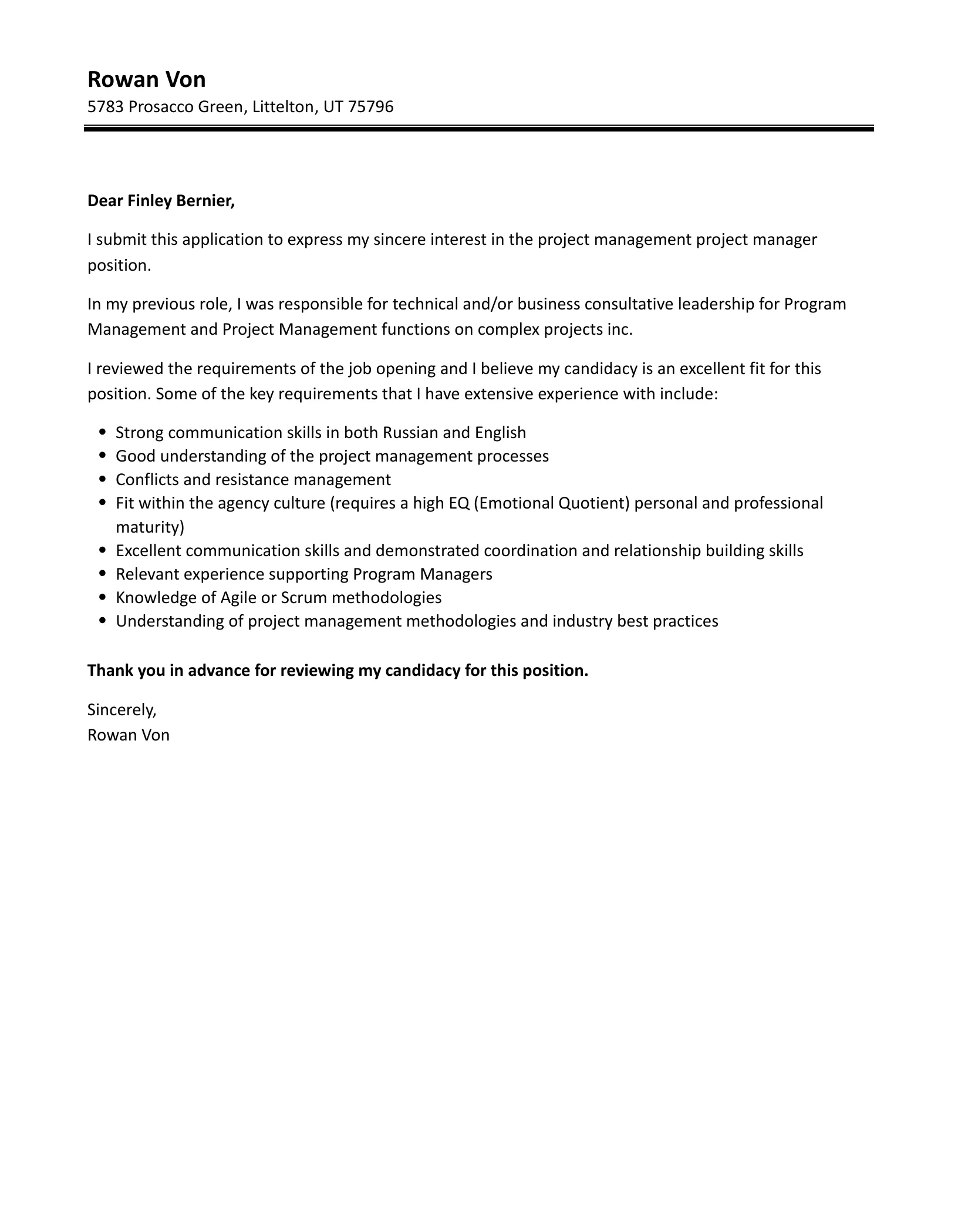
Even with compelling content, a poorly formatted cover letter can be difficult to read. Ensure that your cover letter is visually appealing and easy to scan. Use a clean, professional font such as Arial, Calibri, or Times New Roman. Maintain a consistent font size. Use a font size between 10 and 12 points for the body text and 12-14 points for your headings. Use white space effectively to break up the text and make it more readable. Keep paragraphs concise, and use bullet points to highlight your key skills and achievements. Remember to use a professional layout. Ensure proper spacing between paragraphs and sections. This makes your cover letter more accessible and easier for the reader to digest the information. Well-formatted documents are easier to understand.
Formatting a professional cover letter
Professional formatting is essential for making a positive first impression. Start with your contact information at the top left, including your name, phone number, email address, and LinkedIn profile URL. Follow this with the date and the hiring manager’s contact information on the right side, if known. Then, use a clear and concise structure. Divide your cover letter into logical sections, such as an introduction, body paragraphs highlighting your skills and experiences, and a conclusion. Additionally, use a professional salutation, such as “Dear Mr./Ms. [Last Name]” or “Dear Hiring Manager,” and a professional closing, like “Sincerely” or “Best regards,” followed by your signature. A well-formatted cover letter showcases your attention to detail and professionalism, which are essential qualities for a project manager.
Effective Cover Letter Closing
The closing paragraph of your cover letter should leave a lasting impression on the hiring manager. In the closing, express your enthusiasm for the opportunity and reiterate your interest in the role. Reiterate your key qualifications in a succinct manner and connect them to the company’s needs. Show your confidence and readiness to take on the challenges of the role. Also, thank the hiring manager for their time and consideration. Conclude by stating your availability for an interview and providing your contact information. A well-crafted closing paragraph reinforces your interest and makes you a strong candidate.
Call to Action and Next Steps

After expressing your interest, include a clear call to action. Make it clear that you are eager to discuss the position further. State your availability for an interview and provide your contact information. Also, tailor your call to action to the specific job description. Refer to a particular project, skill, or requirement to show your understanding of the role and the company’s needs. Then, follow up with the hiring manager. If you have not heard back within a week or two, follow up with a polite email to reiterate your interest and ask about the status of your application. A well-defined call to action encourages the hiring manager to take the next step, increasing your chances of getting an interview.
Adding a professional signature
Adding a professional signature is essential for creating a professional and polished cover letter. Whether you’re submitting a digital or a printed cover letter, include a professional signature at the end of your letter. If submitting a digital cover letter, you can use a scanned image of your handwritten signature or create a digital signature using tools like DocuSign. Also, ensure your signature is legible and professional. Place your signature below the closing salutation, followed by your typed name. A signature reinforces the professional tone of your cover letter, making it look more polished and complete, showcasing your attention to detail.
